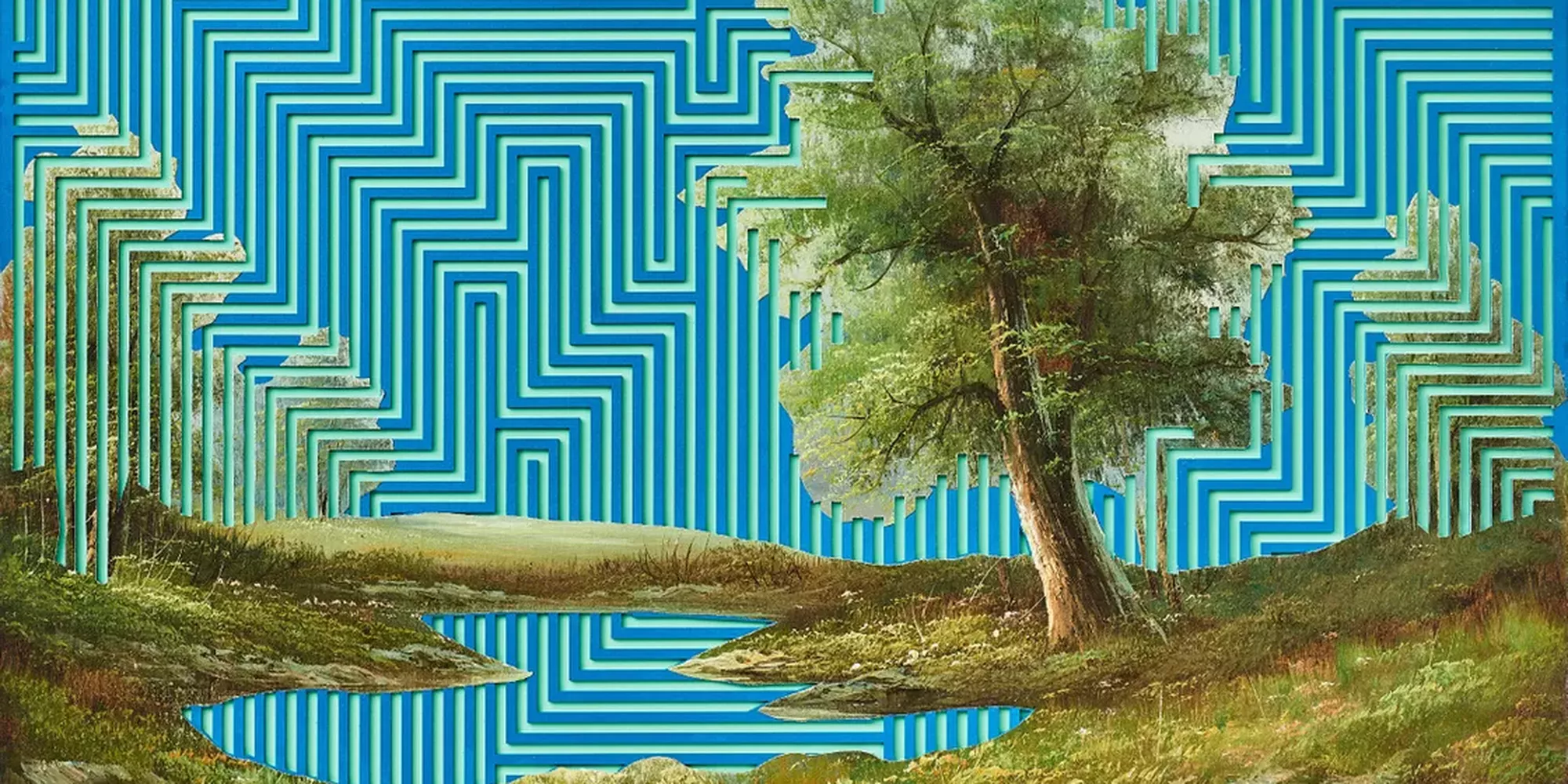The art of distortion and exaggeration can completely transform an image, giving new meaning, intention and feeling to subjects that would otherwise be familiar to the eye. Here, we take a look at artists who push the boundaries of distortion, exaggerating features, manipulating colour and reconfiguring familiar images. These artists warp our sense of reality to create artworks that sit on the boundary between ‘familiar’ and ‘unfamiliar’.
These artists disregard the need for optical illusionism, throwing away the ideas of beauty, perfection and normalcy for distorted images that embrace abnormality and change. More than the exaggeration of shapes, distortion takes many forms.
Whilst Nadia Attura uses her powerfully saturated colour palette to distort our perception of nature scenes, Baldvin Ringsted alters his images into rhythmic, musical forms. Bo Kravchenko plays with light and movement in his landscapes, using diptychs to distort his landscape scenes. The purpose of art is not to recreate reality, but to transform it into something more intriguing. We love how this selection of artists plays with perception, distorting reality to great effect.
1. Nadia Attura
Contemporary artist Nadia Attura masterfully blends landscape photography with tactile collage to create poetic portrayals of place and time. Her unique, idealised interpretations of paradise are beautiful artworks that seem to be plucked straight out of the artist’s imagination. Attura reconfigures her exotic scenes of deserts, jungles and gardens by utilising a stunning oversaturated colour palette, distorting the image and giving it a new lease of life. Nadia’s enriched colours add a touch of the absurd to her compositions and distort our ordinary perception of our natural environment.
After gaining a degree in Photojournalism, Nadia Attura has featured multiple times in the Royal Academy Summer Exhibition and has been shortlisted on other occasions. Press features include The Guardian, The New York Times, and artist of the month for Vogue Magazine. One of five finalists at the VAO, Attura's work continues to delight viewers and feature in prominent residential and public projects across the world.
2. Baldvin Ringsted
Icelandic multi-media artist Baldvin Ringsted explores the intersections of music, memory, and the physical world, examining the parallels between musicality and lived experience. Through his use of distortion, he reworks common, unsigned decorative art, a style popularised in the 1970s and frequently seen in thrift stores today.
Beginning with a painting or photograph, Baldvin deconstructs the canvas, cutting and rearranging it onto a board to create rhythmic patterns. By mounting the fragments on a carved board, he adds a three-dimensional element that harmonises the nostalgic warmth of these “thrift store” pieces with a contemporary, calculated structure.
3. Bo Kravchenko
Bo Kravchenko is an American contemporary artist of Ukrainian origin. Within his art, he seeks to unearth a formula for an abstract landscape, revealing a sense of place and movement in his paintings. His representations of nature, occasionally unfinished, raw, or minimalistic, offer a serene refuge from life's tumult, soothing the soul. His aspiration is to kindle a profound connection between viewers and the land, across its myriad moods, seasons, sensations, and destinations.
Much of Bo’s work incorporates elements of distortion, depicting different types of landscapes with a modern sense of speed and movement. He aims to remind others through his art that we are living in a modern and beautiful world that is full of calmness, tranquility, and unique colour combinations made by Mother Nature.
4. Marc Todd
Marc Todd is an acclaimed UK based landscape painter, working from his studio in the South West of the UK.
He defines his style as Contemporary Impressionism, using colour and light, textures and marks to create dynamic and engaging images that are truly unique and highly distinctive.
This treatment of paint is used to create the vibrant landscapes and cityscapes for which he is gaining an international reputation among collectors of contemporary art.
Despite landscapes and cityscapes appearing to be very different subject matters, Marc recognises and creates a visual synergy between the two, with an approach to the application of paint that is used to communicate a sense of spontaneity and dynamism in each of the environments.
His signature style centres around an intuitive, modern use of colour and a subtle application of texture. Marc has developed a range of techniques to apply paint with unique tools, including sponges, strips of balsa wood and even Lego bricks. With brushes rarely used, his stunning paintings capture the fast pace of city life and the natural movement of the forest.
These artists remind us that art is not confined to the accurate depiction of reality; it is a medium for reimagining and reshaping the world around us.


